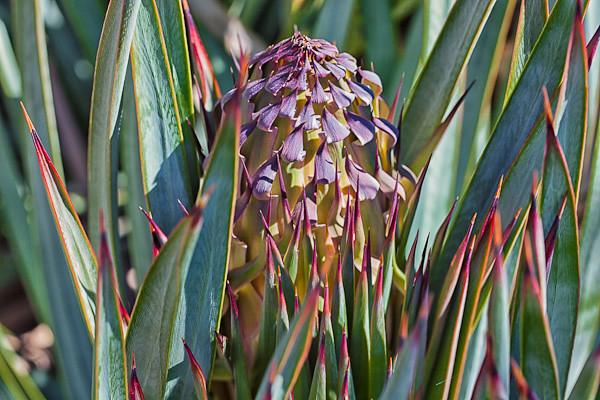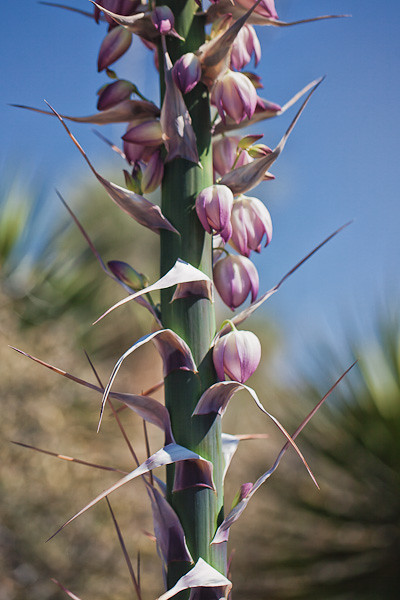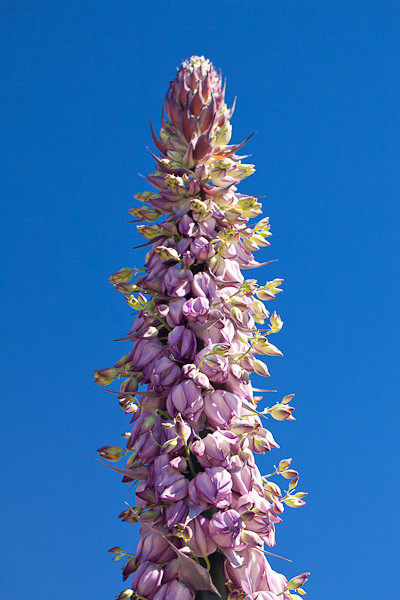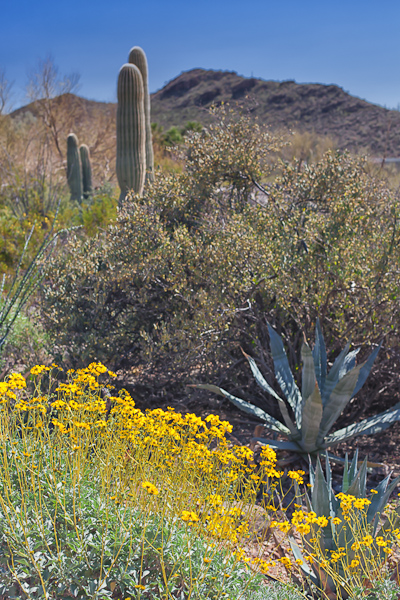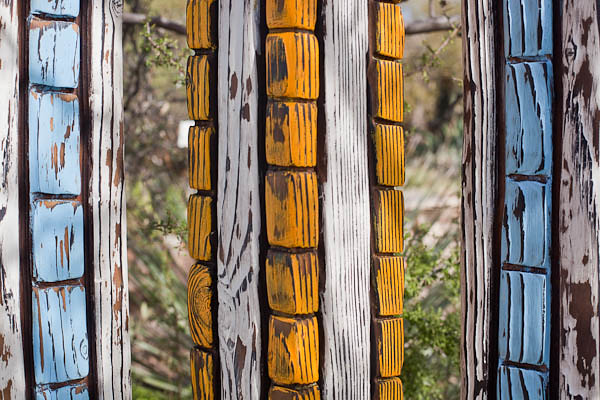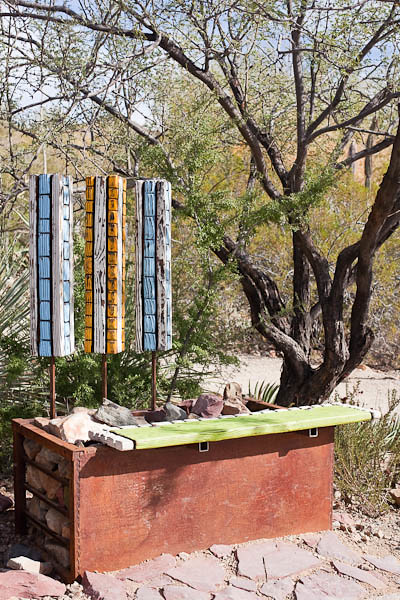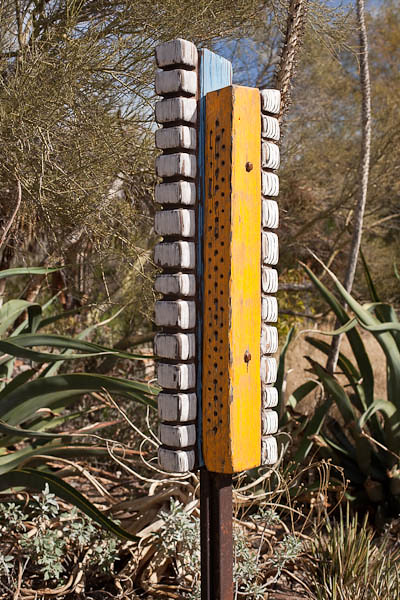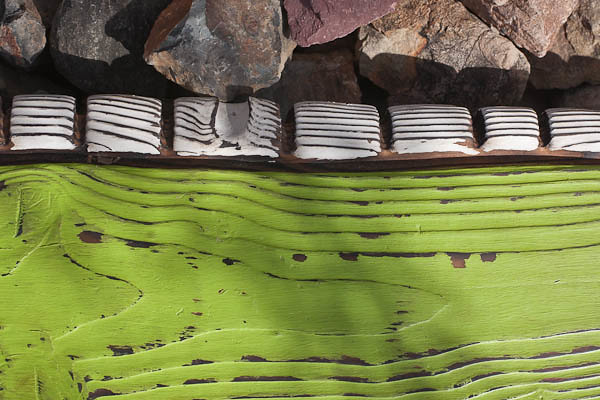The Spanish Bayonet has many common names, plus an out of date genus name and a corrected genus name. One look at this eye catching plant, and it is understandable why it has attracted much attention (and many names, too.)
The name that seems the most fitting is that of Spanish Bayonet. While the literature reports the sharp tipped leaves as “dangerously rigid” and states it was named after a bayonet because of its dagger like tendencies, I cannot help but think that the lovely red tips also influenced this name. As I have been (unintentionally) stabbed by one of these daggers, and as this unfortunate contact drew blood from my arm faster than a needle, I associate the Spanish Bayonet with blood letting tendencies.
This used-to-be yucca, now a hesperoyucca, still bears names from its misidentified yucca past — chapparal yucca ( yucca growing in a chapparal habitat) and foothill yucca (obviously named) and it is even called the common yucca, though it is no such thing. (Though “common hesperoyucca” is rather a mouthful.) The Spanish Bayonet was only found to be a misidentified plant through DNA testing, so one can hardly fault any of the yucca names. It is similar to a yucca in looks, but only distantly related.
This plant and its relatives, the agaves and yuccas, are some of the most conspicuous plants in the arid Southwest, not only because its plant form is highly attractive and frequently used in xeriscaping, but also because its flower (or inflorescence – what the flowering stalk is called) is hard to miss.I find them attractive nuisances, because when I see them flowering along the highways, I want to either look — a definite no-no — or stop and take photographs.
The Spanish Bayonet blooms only once, after it spends its lifetime accumulating enough sugars and starches to provide the fuel for the rapid development of its shooting floral stalk. This type of plant is called a monocarpic — it spends its life energy to produce one huge floral stalk which then sets a huge quantity of seeds. The plant’s cause of death is most commonly ‘setting flower’.
—————–
Bo Mackison is a photographer and owner of Seeded Earth Studio LLC, living and photographing in southern Arizona. She cannot resist the occasional botany lecture interspersed with relevant photographs.
